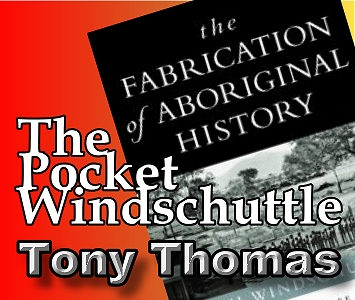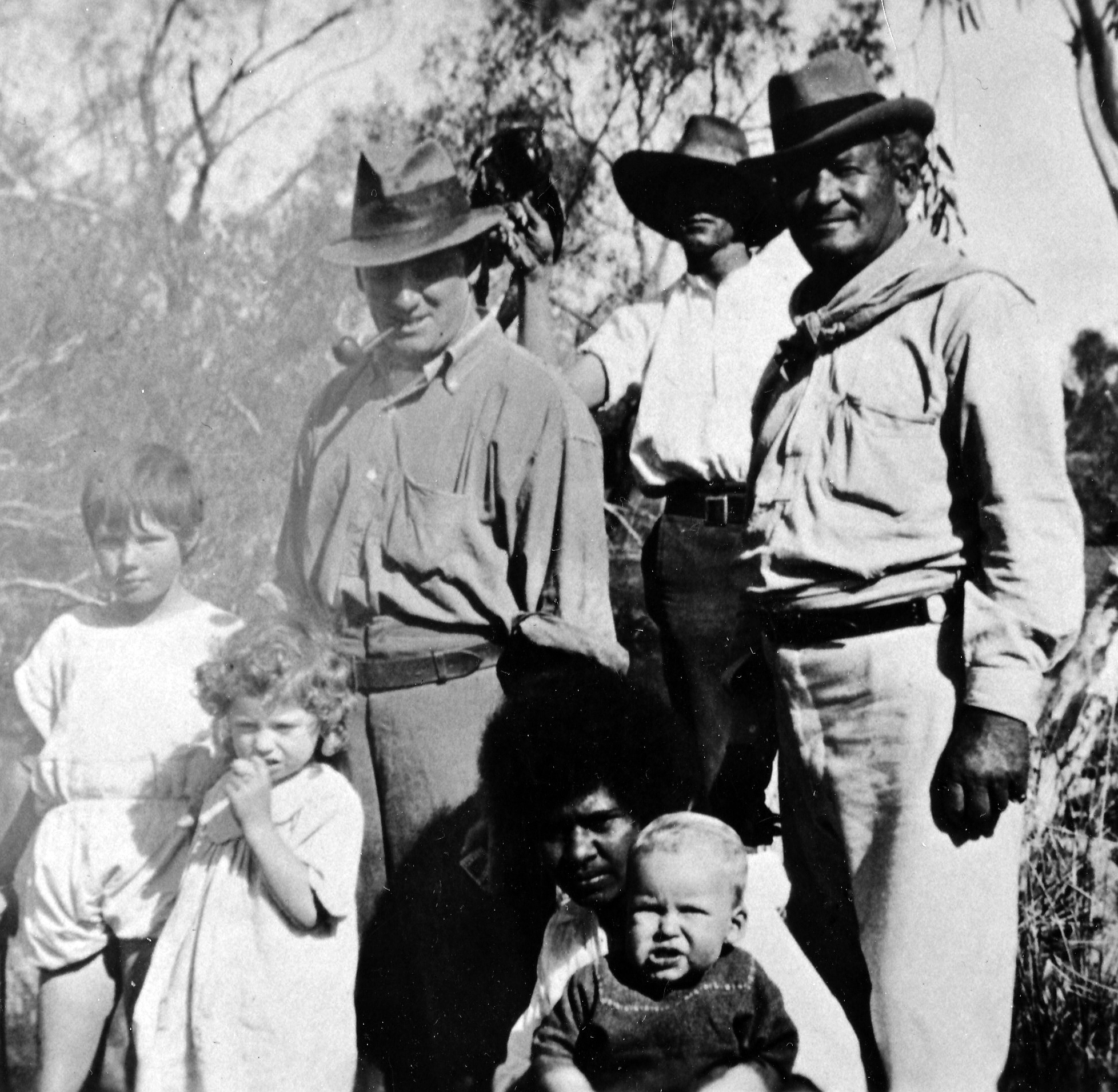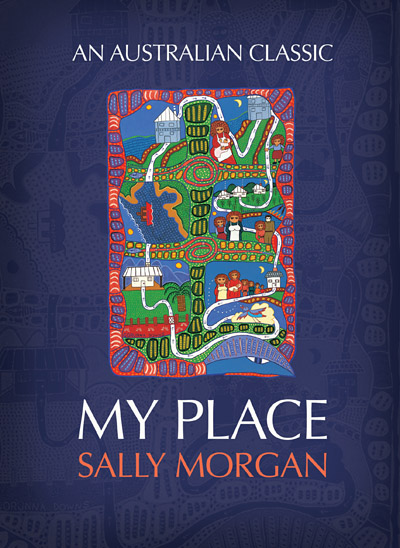The Pocket Windschuttle: The fictions of Sally Morgan
Tony Thomas: Autobiographies by Stolen Generation claimants often contain harrowing narrations and a deliberately naïve prose style that adds to the apparent authenticity. But readers should not take at face value assertions that the stories are factual.
[Note: All page references are to The Fabrication of Aboriginal History – Volume Three: The Stolen Generations 1881-2008 by Keith Windschuttle (Macleay, 2009)]
What gives the ‘stolen generations’ story traction are Aborigines’ own written accounts about being stolen.  Some, like Sally Morgan, have become national celebrities, academic icons and earned huge media attention.
Some, like Sally Morgan, have become national celebrities, academic icons and earned huge media attention.
Sally Morgan’s best-seller My Place (1987) was made a compulsory text in countless high schools across the nation. This helped lift sales to 600,000 plus, an astronomic number by Australian publishing standards.
Students and teachers assume My Place is factual. It is not.
The book is a personal-discovery narrative where Sally in Perth gradually persuades her mother Gladys, grandmother Daisy and great-uncle Arthur to reveal their life stories. Sally and her mother recognise their true Aboriginal identity and find their inner lives transformed.
Sally Morgan approached Ray Coffey, managing director of Fremantle Arts Centre Press, with the germ of a book project. Coffey was a class warrior and keen to counter the early WA biographers such as Mary Durack (Kings in Grass Castles, 1959).
Coffey and Morgan workshopped the shape of her autobiography, as publishers do. Together they found ways to work into the book some fashionable melodramatic topics:
- A rich, sexually predatory white pastoralist not only seduces his female Aboriginal workers but commits incest with their offspring
- Aboriginal workers are paid in rations not wages, and treated like slaves
- A wealthy white socialite in Perth ruthlessly exploits her perpetually loyal black servant (Sally’s mother)
- Three relatives are forcibly removed to become Stolen Generations.
The villains of the supposedly factual book were the real-life old-time pastoral family the Drake-Brockmans.
Long chapters appear as if they are tape-recorded life memories of Morgan’s grandmother Daisy Corunna, her mother Gladys Milroy and her grandmother’s brother Arthur Corunna. All three claimed to have been stolen children.
Daisy’s account was that she was the daughter of Howden Drake-Brockman and a full-blood mother Annie Padewani. Daisy was removed from the station camp to gruelling life as the homestead’s domestic, deliberately cut off from her tribal mother and clan.
At 15 Daisy was taken by Howden Drake-Brockman and his wife to Perth, purportedly for schooling but really to continue domestic servitude.
Daisy is given the lines:
Why did they tell my mother that lie?…God will make them pay for their lies. He’s got people like that under the whip. They should have told my mother the truth. She thought I was coming back…When I left, I was cryin’, all the people were cryin’, my mother was cryin’ and beatin’ her head..I called, ‘Mum, Mum, Mum! She said, Don’t forget me, Talahue!’ 309
Daisy’s brother Arthur was also claimed to be the child of Howden and Annie Padewani, and he too was stolen and taken to Swan Native and Half-Caste Mission near Perth:
They told my mother and the others we’d be back soon…I cried and cried, calling out to my mother, ‘I don’t want to go, I don’t want to go!’…I never saw her again. 309
Daisy’s first child was, in turn, taken/stolen. The rich and cruel Drake-Brockmans took her second child Gladys from her and sent Gladys, aged 3, to the Parkerville Children’s Home near Perth. Daisy was too overworked and confined at night to see Gladys more than a couple of times a year.
Daisy fails to explicitly identify who was the father of her daughter Gladys. But the book drops a very big hint immediately, by describing how Howden Drake-Brockman, Daisy’s own father, was fascinated by Daisy’s daughter Gladys:
‘Bring her here, let me hold her’. He wanted to nurse Gladdie before he died. 311
In blunter language, Sally is claiming that Howden fathered both Daisy and Daisy’s daughter.
The popular edition of My Place had a photo of Sally but strangely, none of her grandmother Daisy.
Judith Drake-Brockman, daughter of Howden, published her own memoir, Wongi Wongi, in 2001. In it Windschuttle finds six photos of Daisy, from Daisy’s teenage years to middle-age. Daisy has thick fuzzy hair, in ‘Afro’ style, very much like Melanesians or Fijians.
Sally Morgan’s memoir dismisses the idea that a Torres Strait Islander and station cook, ‘Maltese Sam’, fathered Daisy. But Judith Drake-Brockman says that ‘Maltese Sam’ claimed to be Daisy’s father. He had a ‘marvellous head of thick fuzzy hair’. Daisy, says Judith, also had the facial features of the Islanders. 313

This is the photograph that disproves the central allegations of Sally Morgan’s book My Place: Daisy Corunna (foreground) is shown working as a nanny to the Drake-Brockman children on the family’s north-west pastoral station in the early 1920s. At right is Howden Drake-Brockman, who Morgan falsely claimed was Daisy’s father. Daisy’s Melanesian heritage is clearly visible in her thick fuzzy hair, unknown among Aboriginal people. 314-315
Judith’s book Wongi Wongi contests all the family melodrama written by Sally Morgan.
- The three ‘stealings’ of Daisy, her brother Arthur and Gladys were just melodramatic invention.
- Daisy’s brother Arthur left the station at 14 to look for work, not to be taken to a mission for natives.
- Daisy’s allegedly forced and permanent move from Corunna Downs to Perth in 1920 was followed by Daisy’s return to Corunna a year later. The Drake-Brockmans summered annually in Perth and in the early 1920s took Daisy back with them each year to Corunna. Daisy regularly spent months of her teenage years on the same station as her mother Annie. 313
- Daisy’s full-blood mother Annie was happy for Daisy to go with the station owners to Perth, because Maltese Sam had been threatening to take his daughter overseas.
- Far from being a wealthy socialite, Howden’s wife Alice Drake-Brockman became an early widow in 1928. For much of Daisy’s life-long service with her, Alice lived by renting out rooms in her home because the family was bankrupt. 314
- Daisy stayed with Alice and Alice’s four children for 30 years as nanny, co-worker and companion, rather than tyrannised domestic servant. Indeed Judith, Alice’s daughter, viewed Daisy as her second loving mother. Judith co-dedicated Wongi Wongi to her ‘beloved nanny, Daisy Corunna’. 314
- Far from being overworked from dawn to late night, Daisy’s main role was caring for the children. Daisy, Alice and the children themselves shared the household chores.
This was the Depression era. “On these days when Daisy washed, Mum cleaned and polished the floors…Mum and Daisy were great cooks and enjoyed sharing the cooking…Daisy invented several recipes.” 315
- When Howden the patriarch allegedly begged to hold Daisy’s daughter Gladys (thus suggesting paternity), he was half-paralysed, comatose and unable to speak, let alone hold new babies. He died six weeks after that birth and never knew of Gladys’s existence. 315
- Daisy’s daughter Gladys was not forcibly sent to a half-castes’ Home at Parkerville. Alice Drake-Brockman and a nun enrolled her there because Parkerville was a charity boarding school for dependent, often illegitimate, children.
It was not an institution for Aboriginal children, who were a small minority among the 100 white children there. The normal practice in those days was that illegitimate children, especially children of teenagers, were institutionalised.
- Moreover, Daisy and the family made regular visits to see Gladys, most Sundays in winter for picnics, and every second Sunday in summer. 318
As Judith’s sister June put it:
We used to have wonderful picnics, go with Daisy with cakes for Glad. I used to go up and stay at Parkerville Home {in the nearby Darling Ranges} with her. Daisy and I would pack a hamper…and we’d walk up, trudge up the hill to Parkerville Home, Sister Kate’s, as they called it, with all this – absolutely laden with food – and then we’d meet Gladdie, and that happened regularly. 319
Judith considered My Place a vicious farrago:
“It hurt me to think that she (Sally Morgan) could write such absolute, fabricated tripe about our family. Of course it hurt.” 315
Judith knew Daisy for 63 years and also resents the caricaturing of Daisy in the book as a ‘poor fella black’, speaking in lower-class accents. In fact Daisy spoke as well as Judith did and in reality trained Judith.
Sally Morgan and her publisher Ray Coffey declined to answer the Drake-Brockman’s accusations of fictional writing. Neither Sally nor her mother responded to Drake-Brockman urgings that a DNA test would resolve the issue of Daisy’s and Gladys’s paternity. 319
Morgan is now a full professor of the Graduate Research School at the University of WA and Director of its Centre for Indigenous History and the Arts.  Her only formal qualifications are in psychology and she has no other major work of scholarship to her credit than My Place, Windschuttle says.
Her only formal qualifications are in psychology and she has no other major work of scholarship to her credit than My Place, Windschuttle says.
“She clearly gained her academic appointment primarily on the strength of the impact made by My Place,” he says.
She has a publicly funded position, and many thousands of students are required to read her book in high schools, and write essays on it unaware of its dubious factuality. The paternity issue in particular is not a mere dispute between two families.
“Morgan’s public position obliges her to accept the responsibility to defend her work,” he says. 320
He also forcefully requests Morgan to make public to other researchers her original tapings of her mother, grandmother and great-uncle, for accuracy checking.
“Morgan clearly has a case to answer,” he says. 320
Summing up, he says that Sally’s grandmother Daisy gained from the Drake-Brockmans both a long-term job during the Depression and protection and care for her daughter Gladys – including protection from WA’s Chief Protector of Aborigines A.O. Neville.
Gladys gained a good education and a career in small-business retailing. And two of Gladys’ daughters became senior academics. Not a bad outcome for a grandmother whose origins were from a black’s camp on a remote station.
Windschuttle concludes:
Rather than a tragedy of white racists stealing children and exploiting Aboriginality, the real Daisy’s story was one of fulfilment within white society.
Read The Pocket Windschuttle by Tony Thomas here…
Buy The Fabrication of Aboriginal History – Volume Three: The Stolen Generations 1881-2008 here…
 Sign In
Sign In 0 Items (
0 Items ( Search
Search








